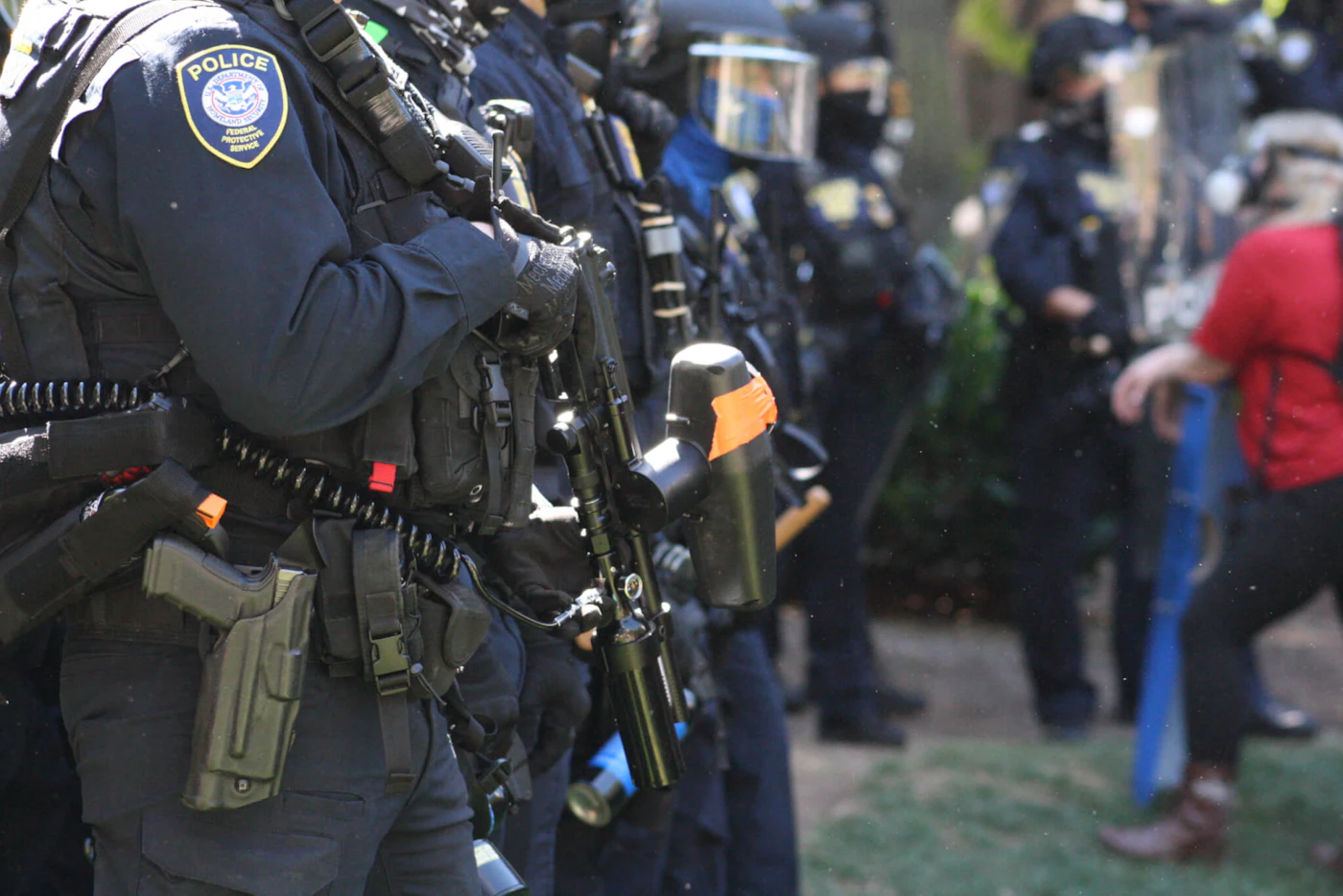The measures seem to serve as a response to incidents over the summer where federal law enforcement officials refused to identify themselves or the agencies they worked for while violently detaining protesters.
In the months following the police killing of George Floyd in May, millions of Americans took to the streets to demand racial justice and police reform in what became the largest protest movement since the 1960s. Rather than listen to their demands or push for changes, President Donald Trump deployed mysterious federal and military personnel—who frequently refused to identify themselves—into American cities to crack down on protesters, often escalating confrontations and leading to violence.
On Thursday, bipartisan members of the House and Senate signaled they were prepared to deliver a rebuke to Trump’s response to the protests. As leaders in both parties prepared the final draft of Congress’ annual defense authorization bill, they included a measure that would require federal law enforcement officers and members of the US armed forces and National Guard to “visibly display” their own name and the name of their agency when responding to protests or other civil disturbances.
RELATED: Trump’s Use of Federal Forces in Portland Draws Comparison to Gestapo, Secret Police
That proposal seems to serve as a response to several incidents over the summer where federal law enforcement agents refused to identify themselves or the agencies they worked for. The most notable example occurred in Portland, Oregon, where federal officers dressed in camouflage repeatedly attacked protesters, threw flash-bang grenades and deployed tear gas at them, and detained and transported protesters in unmarked vans.
Mark Pettibone was apprehended in this manner in July, when he was surrounded by mysterious men dressed in camouflage in Portland while walking home from a peaceful protest near a federal courthouse.
“Suddenly, an unmarked, dark-colored minivan pulled up in front of me, and four or five people clad in military fatigues jumped out,” Pettibone wrote in an August op-ed for BuzzFeed News. “I had no idea who they were, but I’d been warned earlier that unmarked vans had been snatching protesters who strayed from the larger group near the Hatfield Courthouse. So I did what most people would do. I ran.”
The men gave chase and surrounded him until he surrendered. They detained him and threw him into a van without giving him a reason. “I feared for my life,” Pettibone wrote. He wasn’t sure whether he was being arrested or “abducted” by far-right extremists, who had been a steady presence at Portland protests.
Pettibone said he was detained and searched, placed in a holding cell, and eventually released after he refused to waive his Miranda rights and answer questions. He received no record or documentation of his arrest and no knowledge of who arrested him or why. It was only later that he found out the men who arrested him were federal agents working with the Department of Homeland Security.
Pettibone and the American Civil Liberties Union are are now suing suing President Trump, the Department of Homeland Security, the US Marshals Service, DHS officials, and the federal agents that apprehended him and others, accusing them of using excessive force and illegal detentions to rob protesters of their freedoms of speech and assembly.
The detainments—which many lawyers said resembled kidnappings—sparked backlash, prompting Democrats to introduce bills requiring federal law enforcement officials to clearly identify themselves and their agencies.
That effort appears to have paid off. Democratic Sen. Chris Murphy of Connecticut tweeted on Friday that the measure included in the Defense bill was the result of negotiations between he, Sen. Minority Leader Chuck Schumer (D-New York), Sen. Jack Reed (D-Rhode Island), and Sen. Jim Inhofe (R-Oklahoma).
“[We] worked out a compromise that requires law enforcement doing crowd control to clearly identify themselves,” Murphy wrote. “This is important and good for the country.”
The new bill also seeks to address another controversy that emerged when Americans took to the streets this summer: the militarization of local law enforcement. As protesters marched against police brutality, police often responded with more brutality, using military-grade flash-bang grenades, tear gas, rubber bullets, helicopters and armored vehicles obtained from the Department of Defense (DOD). Much of this equipment was obtained via the federal 1033 program, which allows the DOD to transfer extra military equipment to local law enforcement agencies for free, as long as they cover shipping and maintenance fees.
The final draft of the defense bill seeks to ban the Pentagon from transferring certain weapons to state and local authorities, including bayonets, weaponized tracked combat vehicles, weaponized drones, and most grenades, with the exception of stun and flash-bang grenades.
The bill, which also includes several other measures that implicitly rebuke Trump, will now head to a vote in both the House and Senate. Trump has threatened to veto the bill over lawmakers’ refusal to repeal Section 230 of the 1996 Communications Decency Act—which protects social media companies like Facebook and YouTube from lawsuits over false, objectionable, or illegal content posted to their platform—as part of the bill. Sen. Inhofe, who chairs the Senate Armed Services Committee, said the provision “has nothing to do with the military.”
“You can’t do it in this bill. That’s not a part of the bill,” he told Politico.
Lawmakers believe they may be able to secure a veto-proof two-thirds majority, which would allow them to override Trump if he does choose to veto the legislation. If they succeed, it could mean a small but noteworthy victory for increased transparency among law enforcement.




